Getting an Education in Tokyo
Back to Contents of Issue: January 2004
|
|
|
|
by John Dodd |
|
|
The market
English-language education in Japan has a surprisingly long history, starting with the establishment of the Saint Maur School in Yokohama in 1872. St Maur's is still alive and well and taking in children located in Kanagawa.
Since then, the development of international schools in Japan has occurred in waves. The first wave was from the turn of the 20th century through to the 20s, when the concept of international schooling was officially recognized in Switzerland.
The next wave came after World War II, with the influx of foreign servicemen.
The third was during the bubble years in the late 80s and early 90s.
Government regulation
A minimum nine years of education for children between the ages of six and 15 is compulsory for all Japanese nationals. Primary school is usually from age 6 to 11 (six years), junior high is from 12 to 14 (3 years), and high school is from 15 to 17 (3 years). The children of Japanese parents who are not returnees are supposed to attend regular Japanese schools. But there is a some confusion about just who is considered a "returnee," and a growing number of internationally-minded Japanese parents are sending their children to international schools instead.
For some reason, the children of expats and international marriages have not been brought under the regulatory umbrella and are therefore able to attend international schools if they choose to (although they can also attend a regular Japanese school or even do home schooling).
International schools are typically registered but not regulated by the government. Instead, these schools are privately run and cater to a rather exclusive clientele of expat and mixed race households, in which demand for a quality education tends to be high. To some degree, the market ensures that they are self-regulating.
Preschool
However, if you're like most foreign parents, you probably prefer to have your children educated in English -- the world's lingua franca -- in which case there is a good choice of international preschools and kindergartens. These normally take children from the ages of two to three years old.
Just remember, though, that although your children may look little, don't imagine that it's somehow easier or cheaper to get them in. It isn't. Prices are basically the same for a two-year-old in an all-day international preschool as they are for a 12- year-old attending junior high schools.
Furthermore, the waiting lists at the most central preschools are long, and we recommend that you reserve a place at least 12 months before you plan to have your child enroll.
Among our survey respondents, there are also a number of preschools attached to regular schools. These include: the American School in Japan (ASIJ), whose preschool is in Meguro, with the main school in Chofu; K.International School (KIST) in Arakawa-ku; and Yokohama International School (YIS). The two preschools that focus solely on "littlies" are PAL in Nishi-Azabu and Yoyogi International Preschool.
PAL's distinguishing feature is its "Freestyle Play" format. Director Chia Ura says, "We try to let children discover important skills and social interaction for themselves -- under the careful eye of our experienced teachers, of course. Our teachers are all qualified and are very proactive in making sure that we are up-to-date with teaching methods and trends overseas."
Yoyogi International Preschool and Kindergarten
Like other professional institutions, YIP divides children into four developmental groups: toddlers of 18 to 24 months, preschoolers of 2- to 3-years-old and 3- to 4-years-old. There are also several kindergarten classes for children of 4- to 5-years-old and 5- to 6-years-old.
Director Yuko Muir tells us what makes YIP different: "We believe in giving our international children exposure to their host country, so we provide Japanese lesson time in the daily schedule. This consists of fun things to do, including listening to stories, learning customs and songs, trying out food, and playing Japanese games."
YIP is obviously a popular place, and it will be expanding to include its own gymnasium in April of 2004.
Primary and junior high
The ASIJ is accredited by the US accrediting body WASC, and graduates typically go on to universities worldwide. Graduates are in high demand, with college recruiters seeking to bring students into Stanford, Georgetown, the University of Chicago, Edinburgh University, Princeton, Brown, McGill, the University of Sheffield and many other top institutions around the world.
Certainly something is being done right at ASIJ -- maybe it's the fresh air out at the spacious and well-equipped Chofu campus. Among the school's alumni are such notables as Edwin O. Reischauer, the US post-war ambassador to Japan and Harvard professor, award-winning author Lowis Lowry and J-pop star Hikaru Utada.
The British School in Japan
Based in Shibuya, the British School serves children from pre-K to grade nine and follows the National Curriculum of England for students aged 3- to 13-years-old. Therefore, children get an early-years education that allows them to make a seamless transition back into the UK schooling system.
ISS differentiates itself by being very focused on the special needs of students adjusting to an international education. Classes are small, typically one to six students, and thus each student has a personalized academic program. As Director Allan Tsuda says, "We create a positive, supportive environment for students by building self-confidence, independent thinking, self-empowerment, mutual respect for others, and responsible citizenship -- including community service."
Since a number of students are from non-native English speaking countries, ISS also provides an excellent ESL program -- something that would be of value to kids from Japanese international marriages as well. All students receive a minimum of 225 minutes of ESL training, and this coupled with the overall English-speaking environment, helps them come up to fluency within a short time.
ISS will be moving to larger and more modern premises in Mita, Minato-ku (10 minutes from Shirokane-Takanawa station) in the spring of 2004.
K. International School (KIST)
KIST has chosen to adopt the Primary Years and Middle Years Programme of the International Baccalaureate Organization and is currently the only authorized IB school to offer both the PYP and MYP in Japan. Implementation of the DP is currently underway and KIST will seek authorization for this in the near future. The IBO programmes are based on the latest educational research and this approach is proving to be increasingly popular with 1300 schools worldwide.
The programme focuses on the total growth of the child, affecting hearts, as well as minds and addressing social, physical, emotional and cultural needs in addition to academic welfare.
At K. International School Tokyo an inquiry-based approach to education provides students with the opportunity to take responsibility for their own learning.
The number of students at KIST has grown to nearly 300 students, consisting of children from both expatriate and local families from over 40 countries.
The school has facilities which include computers, art, music and science rooms, a gymnasium and a heated swimming pool. There are also separate playing areas for students and a well resourced library.
Worthy of note is the fact that KIST offers a more affordable fee structure than most schools in the Tokyo area.
St. Mary's
St. Mary's is a all-grades school, servicing students all the way from K to 12. At the Elementary and Junior High levels, it uses a US-centric training curriculum, moving to the International Baccalaureate program from High School. The school has a Curriculum Coordinator and is fully accredited by the Western Association of Schools and Colleges (WASC) and by the European Council of International Schools (ECIS).
We asked Development Manager Unyu Haku about the trends in where students are coming from. He replied: "Due to the recession, the number of expats in Tokyo is decreasing. However, at the same time there are many Japanese returnees who wish to learn in an international environment. The trick is to keep a balance between native-speaking kids and those who need some integration to be able to participate fully."
Yokohama International School (YIS)
The school follows the Reggio Emelia program for its pre-school students, and the International Baccalaureate (IB) program for grades one through 12. The IB program's Primary Years and Middle Years curriculum ensures that children are very well prepared for the highly competitive exams for universities later. In fact, YIS is the Japan Center for the IB curriculum in Japan.
YIS is also accredited with the New England Association of Schools and Colleges (NEASC) from the US and the European Council of International Schools (ECIS). A special feature of the YIS is its ability to prepare students to get into universities of their choice. As Development Officer Tim Winant explains, "Students may take for free the Princeton Review courses offered by that organization, since its headquarters in Yokohama are actually at the school. These help students prepare for the US SATs and significantly increase their chances of success."
The MBA
One of these innovations has come through an understanding that the local English-speaking adult student population (Japanese and foreign), while wanting to gain higher qualifications, was hamstrung by the need to hold down full-time jobs and support families and mortgages. Thus in 1996, Temple became the first MBA school in Tokyo to offer an executive MBA (EMBA) which would allow working executives to study in their free time. 200 professionals have since gone through the program, and it is now ranked 14th in the USA and 25th worldwide in term of quality and performance.
Indeed, innovation is a hallmark of Temple University, perhaps appropriate given that it offers MBAs. According to William Swinton, TUJ Assistant Dean and a graduate of the program, "the beauty of EMBA classes, held on Saturdays only, is that our students can continue to work as they study. While an EMBA offers usable skills and an immediate return on investment, the ultimate value comes in personal development. At TUJ, we help managers understand themselves so they can become effective leaders."
Funding options
The downside is that there is no external funding for international schools from the Japanese government, even though foreign parents are taxed at the same rate as regular Japanese workers -- the rationale being that foreign kids should attend Japanese schools (too bad if they can't speak the language). As a result, only the biggest and fittest foreign schools actually get to grow, while many others are hunkering down in survival mode. Things are being further exacerbated by the fall-off of expatriates being assigned to Japan these days, as many companies would rather send them to China.
Some within the academic community are fighting for better recognition of the important contribution foreign schools are making to Japanese society. Temple University's Dean Kirk Patterson comments: "We, like other schools, suffer from various limitations due to not being a Japanese university per the regulations of MEXT. Were we to become one, we would lose the freedom of being able to offer a US-style curriculum -- which of course would defeat our purpose for existence. One possible approach is our Special Economic Zone (tokku) proposal to the government, to accord accredited foreign universities [and presumably K-12 international schools] Japanese branch campuses with the same treatment as Japanese universities -- thus removing the discriminatory treatment we now experience."
While the procurement of funding is a problem, it is fortunate this difficulty doesn't seem to be holding back new schools from starting up on a regular basis -- creating more varied niches for foreign parents to choose from. As a result, the quality of English-language-based education continues to improve, and more families are able to access a foreign education of their choice -- even for those children who are returnees or are from local international marriages, where the parents may not be on an expat salary. @ |
|
Note: The function "email this page" is currently not supported for this page.


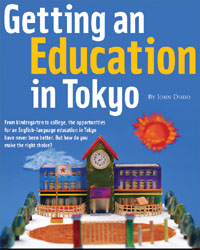 WE SURVEYED TEN LOCAL international schools and learned that while today's plethora of English-language schools in Japan aren't cheap, quality is absolutely world class. You can now combine an education received in Japan with study at many other international institutions, many of which will accept the transferred credits. The real challenge is finding the right Japan-based institution for your needs and goals.
WE SURVEYED TEN LOCAL international schools and learned that while today's plethora of English-language schools in Japan aren't cheap, quality is absolutely world class. You can now combine an education received in Japan with study at many other international institutions, many of which will accept the transferred credits. The real challenge is finding the right Japan-based institution for your needs and goals.
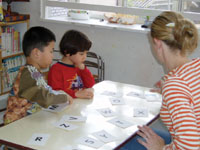 PAL Preschool and Kindergarten (PAL)
PAL Preschool and Kindergarten (PAL)
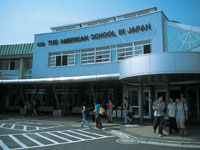 The American School in Japan (ASIJ)
The American School in Japan (ASIJ)
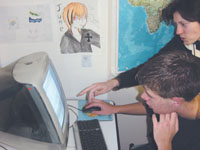 International Secondary School (ISS)
International Secondary School (ISS)
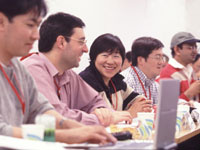 Temple
Temple



